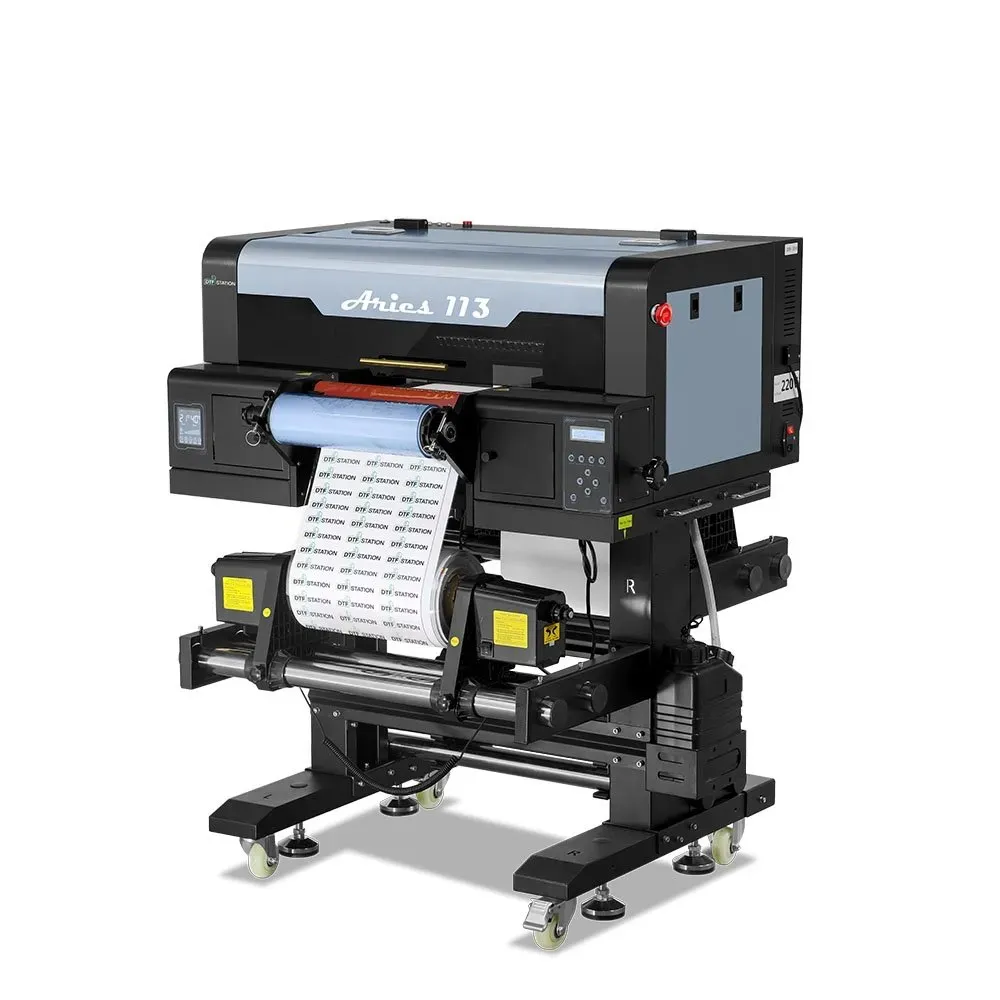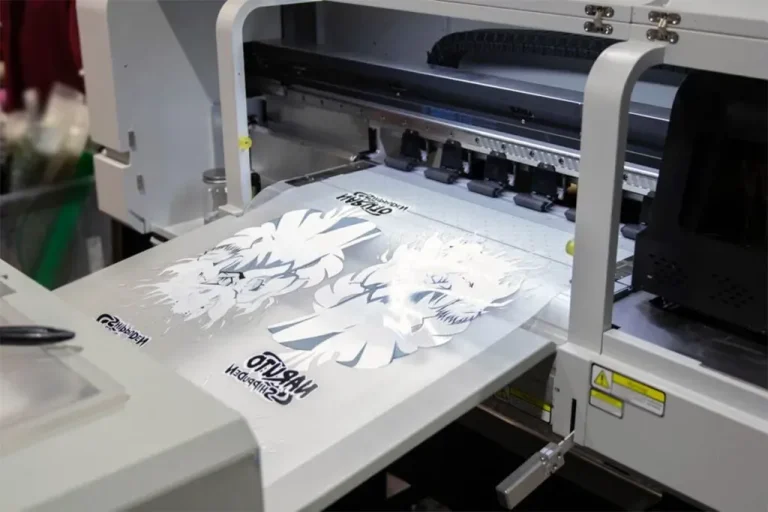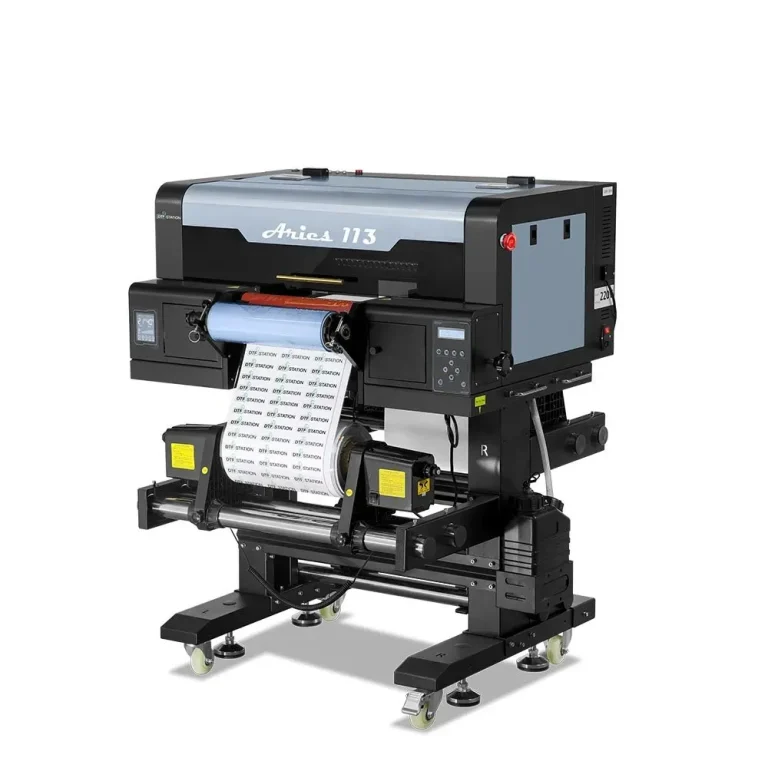UV DTF Printing: A Beginner’s Comprehensive Guide
In the realm of modern printing technology, UV DTF (Direct to Film) printing has emerged as a groundbreaking innovation, expertly blending the capabilities of UV printing with the efficiency of traditional Direct to Film methods. This unique approach not only enhances print durability but also opens the doors to an exciting array of custom printing possibilities for businesses in sectors ranging from fashion to promotional products. Whether you’re looking to create vibrant apparel or striking signage, UV DTF printing delivers exceptional results that stand out. With its high-quality color reproduction and versatility across various substrates, this printing technique is revolutionizing how we approach customization. In this beginner’s guide, we’ll delve into the intricacies of UV DTF printing, exploring its benefits and applications to help you harness this technology effectively.
Also known as UV Direct to Film printing, this advanced technique merges the best elements of UV-curable inks and film transfer technology. By utilizing a specialized film to transfer designs onto various surfaces, this printing method ensures long-lasting and vivid results that truly capture attention. It caters to a wide range of industries, providing high-quality personalized products, from customized apparel to unique promotional items. As such, UV DTF printing is not just a method; it represents a significant shift in the landscape of custom printing solutions, allowing businesses to offer more durable and eye-catching products. Understanding this technology is vital for anyone looking to thrive in the competitive world of personalized printing.
Understanding the Basics of UV DTF Printing
UV DTF printing is a cutting-edge technique that merges Direct to Film technology with ultraviolet curing processes. This method begins with the creation of a digital design, which is then expertly printed onto a special film using UV inks. The revolutionary aspect of UV DTF lies in its curing process; UV light rapidly hardens the inks, ensuring that the print is not only vibrant but also incredibly durable. This immediacy not only speeds up production times but also enhances the quality of the print, making it resistant to wear and tear.
The ability of UV DTF printing to create high-resolution images with intense color saturation is a game-changer for many industries. Because the inks cure almost instantly, there’s minimal risk of smudging or fading, which is often a concern with traditional printing methods. This characteristic is particularly useful for businesses that require reliable and consistent print durability across various substrates.
Furthermore, it is essential to note that the versatility of UV DTF doesn’t end with the printing process itself. The substrates that can be used are virtually limitless, ranging from soft items like T-shirts to rigid materials like metals, plastics, and wood. This flexibility opens up a myriad of customization possibilities, paving the way for creative designs that can cater to any market need.
As businesses explore the potential of UV DTF printing, understanding its foundational elements prepares them for embracing its advantages. By combining the strengths of existing technologies, UV DTF showcases how innovation can directly impact the quality and sustainability of printed products.
The Advantages of UV DTF Printing Technology
One of the standout features of UV DTF printing technology is its remarkable durability. Unlike conventional inks, UV-cured inks are engineered to withstand prolonged exposure to sunlight, moisture, and physical abrasion. This resilience means that items printed through this method can maintain their integrity and appearance over time, making them suitable for both indoor and outdoor applications. Businesses can thus assure their customers of the longevity of their custom items, paving the way for more sustainable consumer practices.
In addition to durability, the vibrancy and quality of colors achievable with UV DTF printing is impressive. The capability to produce rich hues and intricate details makes it an ideal choice for custom printing services seeking to stand out in a competitive market. With a wide color gamut available, designers can achieve the exact look they envision, whether it’s for promotional merchandise, clothing, or personalized gifts. Such quality is critical for businesses aiming to enhance their brand image through visually striking products.
Navigating the Challenges of UV DTF Printing
Despite the enticing benefits of UV DTF printing, potential users should be aware of its associated challenges. The initial investment in UV DTF printing equipment can be significant, which may deter startups or small businesses from entering the market. It’s essential for entrepreneurs to carefully evaluate their budget against the long-term profitability of investing in this cutting-edge printing technology.
In addition to financial considerations, there is a learning curve involved in mastering UV DTF printers. Users must familiarize themselves with the equipment and the printing process, which can vary significantly from traditional methods. Companies offering training programs or comprehensive guides can help accelerate the learning process, ensuring that beginners feel confident in operating the printers, maximizing their capabilities, and preventing costly mistakes.
Exploring Applications of UV DTF Printing
UV DTF printing finds widespread application across various sectors due to its versatility and high-quality output. In the fashion industry, for instance, brands can utilize this technology to create custom apparel with vivid graphics, logos, or unique designs that resonate with their target audience. The method’s ability to cater to both large promotional runs and one-off custom orders opens a plethora of possibilities for fashion designers and business owners alike.
Furthermore, UV DTF printing is becoming a popular choice for creating personalized gifts and promotional products. Items such as custom mugs, phone cases, and signage are all enhanced by the durability and vibrancy of UV-cured inks. Businesses can leverage this technology to produce distinctive items that resonate with customers while maintaining a professional and polished aesthetic.
Recent Advancements in UV DTF Printing Technology
Innovation within UV DTF printing technology is accelerating, with recent advancements focused on making the process more accessible and efficient. Manufacturers are developing compact and user-friendly printers, equipping them with automated functions that simplify setup and daily operations. This shift is promising, particularly for small business owners who may have previously been intimidated by complex printing systems.
Moreover, improvements in ink formulations are ensuring faster curing times and enhanced compatibility with a wider range of materials. As these innovations continue to emerge, they further position UV DTF printing as a viable solution for those seeking quality custom printing options, catering not only to businesses but also to DIY enthusiasts looking for professional-grade results.
The Future of Custom Printing with UV DTF Technology
Looking ahead, UV DTF printing is poised to transform the custom printing landscape significantly. As more businesses adopt this technology, the demand for high-quality, durable prints will increase, pushing manufacturers to innovate continuously. The flexibility of printing on diverse substrates not only meets current consumer trends but also anticipates future market needs for customized products.
As the technology evolves, we can expect advancements in speed, efficiency, and environmental sustainability. The emphasis on eco-friendly UV ink formulations is already gaining momentum, thus aligning the industry with growing consumer concern for environmental impacts. With these developments, UV DTF printing is not just about enhancing product offerings but also about creating a responsible and sustainable approach to custom printing.
Frequently Asked Questions
What is the main advantage of UV DTF printing over traditional printing methods?
The main advantage of UV DTF printing is its exceptional durability. UV DTF printing uses UV-curable inks that provide resistance against scratches, fading, and weather conditions, allowing printed products to last longer than those produced by traditional printing methods.
How does the UV DTF printing process work?
The UV DTF printing process works by first printing a design onto a special film using UV inks, followed by curing the inks with UV light for quick hardening. Finally, the printed film is heat-transferred onto the desired substrate, ensuring a vivid and durable print.
What types of materials can be printed on using UV DTF printing?
UV DTF printing is versatile and can be used to print on a variety of materials including fabrics, metals, plastics, and wood. This allows businesses to create custom printed products ranging from apparel to promotional items and signage.
Is UV DTF printing an eco-friendly printing technology?
Yes, UV DTF printing can be considered eco-friendly as many manufacturers utilize UV inks that are less toxic compared to traditional solvent-based inks. This aligns with modern sustainability practices and minimizes harmful environmental impact.
What are some common applications of UV DTF printing in industries?
Common applications of UV DTF printing include custom apparel production, personalized promotional products (like mugs and phone cases), eye-catching signage, and unique gifts for events such as weddings and birthdays.
What challenges might beginners face when starting with UV DTF printing?
Beginners in UV DTF printing may face challenges such as high initial equipment costs and a learning curve associated with operating the printing machinery effectively. Training and practice are essential to master the technology.
| Aspect | Details |
|---|---|
| What is UV DTF Printing? | A combination of Direct to Film and UV printing techniques that uses UV-curable inks to print on various substrates. |
| The Printing Process | 1. Design Preparation 2. Printing On Film 3. Curing the Ink 4. Heat Transfer |
| Advantages | – Durability – High-Quality Color – Eco-Friendly Options |
| Versatility in Materials | Can print on fabrics, metals, plastics, and wood, making it suitable for various customized products. |
| Common Applications | Custom Apparel, Promotional Products, Signage, Personalized Gifts. |
| Challenges | – Initial Investment Costs – Learning Curve |
| Recent Developments | Manufacturers are creating smaller, user-friendly printers with improved ink formulations for faster curing and broader substrate compatibility. |
Summary
UV DTF printing is an innovative technique in the custom printing landscape, revolutionizing the way designs are transferred onto various surfaces. This method effectively merges the capabilities of traditional Direct to Film printing with the advantages offered by UV technology, resulting in prints that are not only vibrant and high-quality but also exceptionally durable. From apparel to promotional products, UV DTF printing enables an extensive range of applications tailored to meet diverse customer needs. Despite the initial costs and the learning curve associated with mastering the equipment, the long-term benefits, including eco-friendliness and versatility, position UV DTF printing as a valuable investment for businesses and enthusiasts alike. As technology continues to advance, the accessibility and efficiency of UV DTF printing are likely to improve, making it a go-to choice for achieving stunning, personalized printed goods.





